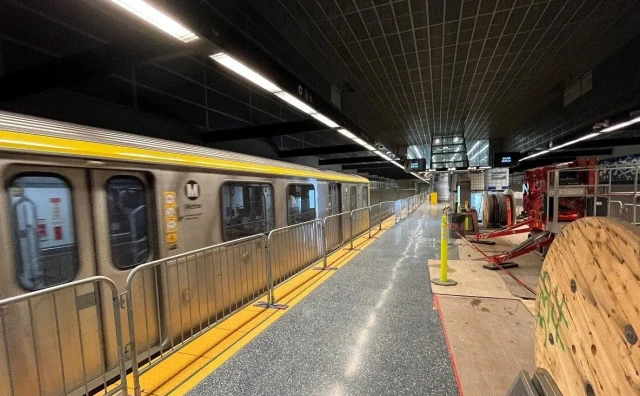With our free press under threat and federal funding for public media gone, your support matters more than ever. Help keep the LAist newsroom strong, become a monthly member or increase your support today during our fall member drive.
With Modesty In Mind, TSA Rolls Out New Body Scans

Beginning in 2007, full-body scanners were installed at the nation's airports to address concerns that terrorists could smuggle explosives hidden in their clothing — or, in one infamous case, their underwear — that wouldn't be picked up by standard metal detectors.
The scanners produced a fairly detailed image of a traveler's body, which was viewed on monitors by TSA screeners in a separate room.
Now, the Transportation Security Administration is rolling out new technology that produces a less revealing image of travelers. The new technology uses the same scanners, but with upgraded software. Call them scanners 2.0
At Reagan National Airport, outside Washington, the software is already in use. TSA screeners look at a standard flat-screen computer monitor that's been bolted to the side of the cylindrical scanner.
"After someone comes through the machine, they see the very same thing that the officer sees. And that is, no image of a passenger but instead a generic outline of a human body indicating where the anomaly is," says Kawika Riley, a TSA spokesman.
That generic outline has been described as a cookie-cutter image, or gingerbread man.
At Reagan National, a 20-something man steps into the scanner. When he steps out, the monitor shows a small yellow square outlined in red on the gingerbread man's hip. It turns out the man had something in his right pocket — a piece of paper.
"As you can see, the technology did exactly what it was supposed to do, which is detect an item," says Riley. "Fortunately, it was just something that he had left in his wallet, but if it had been a threat, the machine successfully detected it, and it was resolved."
TSA Administrator John Pistole says the software upgrades should help ease some travelers' worries about having their nearly naked image examined.
"We've actually been working on this for quite awhile, predating any of the controversy about it," he says. "But we believe this does address the privacy concerns that some passengers have raised."
A spokeswoman for the Electronic Privacy Information Center, which has sued the TSA over its use of scanners, says the group still wants to see the technical specifications of the new software and whether it can store passengers' images.
The TSA says their scanners have never had that capability. By the end of the year, the new software should be in place at many airports.
Copyright 2022 NPR. To see more, visit https://www.npr.org. 9(MDA1OTI3MjQ5MDEyODUwMTE2MzM1YzNmZA004))
At LAist, we believe in journalism without censorship and the right of a free press to speak truth to those in power. Our hard-hitting watchdog reporting on local government, climate, and the ongoing housing and homelessness crisis is trustworthy, independent and freely accessible to everyone thanks to the support of readers like you.
But the game has changed: Congress voted to eliminate funding for public media across the country. Here at LAist that means a loss of $1.7 million in our budget every year. We want to assure you that despite growing threats to free press and free speech, LAist will remain a voice you know and trust. Speaking frankly, the amount of reader support we receive will help determine how strong of a newsroom we are going forward to cover the important news in our community.
We’re asking you to stand up for independent reporting that will not be silenced. With more individuals like you supporting this public service, we can continue to provide essential coverage for Southern Californians that you can’t find anywhere else. Become a monthly member today to help sustain this mission.
Thank you for your generous support and belief in the value of independent news.

-
Kevin Lacy has an obsession with documenting California’s forgotten and decaying places.
-
Restaurants share resources in the food hall in West Adams as Los Angeles reckons with increasing restaurant closures.
-
It will be the second national day of protest against President Donald Trump.
-
The university says the compact, as the Trump administration called it, could undermine free inquiry and academic excellence.
-
This is the one time you can do this legally!
-
Metro officials said it will be able to announce an opening date “soon.”







